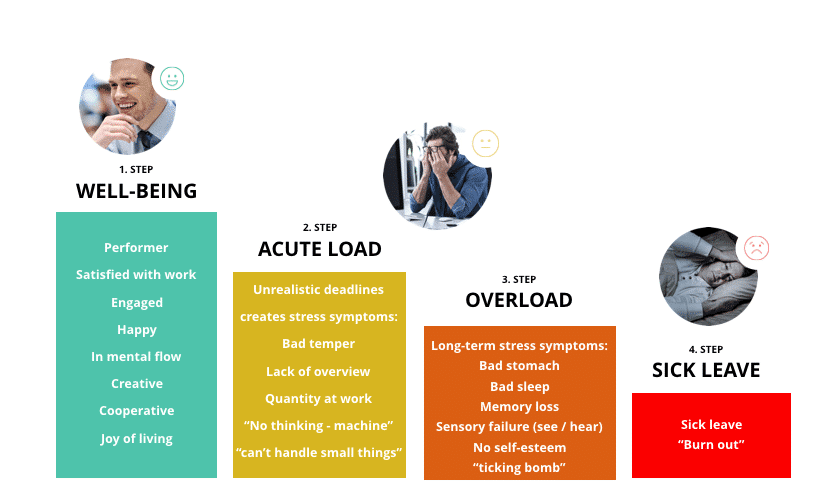In today’s fast-paced and ever-changing work environment, fostering a culture of psychological safety has become increasingly vital. Psychological safety is the foundation for trust, open communication, and collaboration within teams and therefore enables individuals to express their ideas, take risks, and learn from failures without fear of judgement or reprisal.
In this article, we explore the concept of psychological safety and its profound impact on team dynamics and overall employee well-being. Get ready to create a psychologically safe workplace where individuals can thrive and unleash their full potential.
What is Psychological Safety?
Psychological safety refers to individuals feeling safe enough to be and express their authentic selves, voice their opinions, and contribute without fear of negative consequences.
According to Project Aristotle, carried out by Google from 2012 and two years going forward, the study proved that psychological safety was, and is, the core aspect of nurturing talent and giving employees the safety to express ideas, concerns and flourish in the workplace.
A workplace with a high level of psychological safety encompasses a sense of trust, respect, and acceptance within teams, enabling open dialogue and the freedom to take social risks. When team members experience a sense of psychological safety they are more likely to engage in candid discussions, share diverse perspectives, and contribute innovative ideas. As a result, you will see happy, creative and collaborative individuals in your workplace.
The Benefits of Psychological Safety
There are several good reasons to promote psychological safety in your workplace. The best reason is probably to make everyone feel good about their daily lives, but beyond that there are some very excellent benefits to promote and maintain psychological safety.
First of all, psychological safety promotes open communication, allowing issues to be addressed proactively and it will ultimately prevent conflicts from escalating. Allowing people the ability to feel safe about self-expression, sharing their feelings and putting ideas into words is a powerful tool and essential for achieving the full potential of both workplace and employee.
Secondly, it fosters a learning culture, where individuals feel comfortable seeking feedback and experimenting with new approaches. Once employees learn that failure is acceptable and the risk of ridicule is minor, they will dare to try, test and quite possibly: thrive.
As an added bonus, psychological safety improves employee well-being, reducing stress and anxiety associated with fear of failure or criticism. It ultimately boosts employee engagement, satisfaction, and retention – making your workplace more effective and innovative.
Want to enhance employee engagement and retention in your work environment? Discover the benefits of using Woba’s employee engagement survey.
Building a Psychologically Safe Environment
So how do you build a psychologically safe workplace? It’s simple, but not necessarily easy. That may sound contradictory, but it’s not.
The task is equal parts the leadership and the employees themselves. Colleagues will have an easier time establishing psychological safety if they already have a sense of teamwork or prior established friendliness in the workplace. But to be successful in creating psychological safety, you should always assume a top-down approach and lead by example.
The leaders play a crucial role in cultivating psychological safety. They lead by example by encouraging open dialogue, actively listening to diverse perspectives, and by demonstrating their own vulnerability. Leaders must show that it is okay to make mistakes, to be wrong, and they have to demonstrate over and over, when someone else makes a mistake, that it’s no big deal.
By creating a supportive and inclusive culture, leaders empower their teams to speak up and contribute authentically.
Establishing Trust
Earlier in this article, we established that it’s not just the leadership, but also the employees themselves who must play a part in establishing psychological safety in the workplace. Trusting each other is a core element of building a workplace with a high level of psychological safety.
Trust is the bedrock of psychological safety. Building trust requires that colleagues and team members adhere to a few key concepts, such as:
- Expressing reliability
- Maintaining confidentiality
- Honouring commitments
- Showing appreciation.
These values can be demonstrated by hosting team-building activities, making sure to do regular check-ins, and fostering social connections both in and outside the workplace.
Encouraging Psychological Safety Practices
Colleagues, as well as leaders, should encourage each other to share their opinions, ideas, and concerns openly and without fear of negative consequences. By creating opportunities for constructive feedback and promoting a growth mindset where mistakes are seen as opportunities for learning, team members will learn to recognize each other and reward collaboration, risk-taking, and accountability.
Promoting Inclusive Communication
Another important aspect of growing a sense of psychological safety is fostering an environment where everyone’s voice is valued and heard. By encouraging active listening, a sense of empathy, and respectful communication the foundation of psychological safety is set. If you as a leader (or colleague) experience a negative, or even toxic, communication in the workplace, you should make sure that ground rules for discussions are set down and that any behaviour that undermines psychological safety is addressed promptly.
Embracing Failure as a Learning Opportunity
The fear of failure is one of the absolute greatest limiters of innovation and growth in the workplace. By actively encouraging a culture that sees failure as a stepping stone to learning, you will be cultivating a team of idea-rich innovators.
- Always aim to celebrate efforts (not just successes)
- Highlight lessons learned from failures
- Promote a blame-free environment
Continuous Improvement
In the end, you can do everything in your power to create a workplace that thrives with psychological safety – but you should also measure, fine tune and try new approaches along the way.
The best way to go about keeping tabs on what works (and what doesn’t) is to regularly assess the team’s psychological safety through surveys, feedback sessions, and open discussions. Actively address any concerns or barriers that hinder psychological safety and adapt strategies as needed.
What is the take away?
In today’s interconnected and rapidly evolving work landscape, psychological safety is a fundamental element for fostering collaboration, innovation, and employee well-being.
By intentionally cultivating psychological safety, organisations can empower their employees and experience happy individuals who:
- Unlock the full potential of their skillset
- Dare to take appropriate risks
- Share ideas without fear of ridicule or being ignored
- And perhaps most importantly: THRIVE
Investing in psychological safety not only enhances team dynamics and performance but also contributes to a happier and more engaged workforce.
As HR professionals and leaders, it is our responsibility to champion psychological safety and create environments that inspire individuals to bring their best selves to work. Believe in yourself and the people around you and you will grow together.
Build psychological safety in the workplace with Woba
Woba has a single vision – to create a better world to work in. We assist companies in centralizing all employee surveys on the Woba platform, where employee feedback is transformed into concrete action steps. These steps proactively address issues such as work-related stress or poor psychological safety in the workplace.
Woba provides your workplace with a score that precisely indicates the state of psychological safety and offers you the right guidance to improve the situation.
It brings us immense joy at Woba to showcase tangible results from the platform. The numbers speak for themselves – and they only get better going forward.
21% improved well-being and health
32% reduction in absenteeism
500% ROI in terms of lower absenteeism
Do you need to get an update on the psychological safety in your organization?










